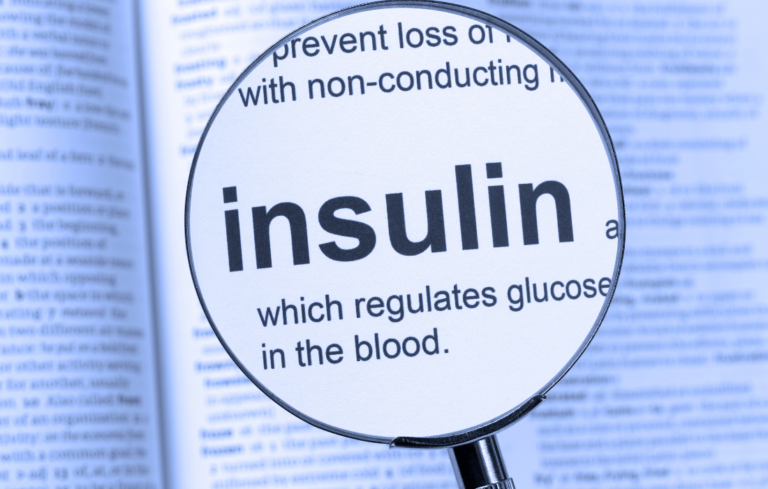Super Bowl Sunday: a night of high-stakes plays, multimillion-dollar ad campaigns, and companies using their biggest marketing budgets of the year to ingrain their products into the minds of millions. Amidst the flashy car commercials and celebrity-packed beer ads, one spot stood out—not for its entertainment value, but for the controversy it sparked. Hims & Hers, a telehealth company that sells direct-to-consumer pharmaceuticals, used their Super Bowl ad to promote compounded semaglutide, a weight loss drug designed to mimic the effects of Ozempic and Wegovy.
The commercial framed itself as a rebellion against Big Pharma and a healthcare system that keeps Americans sick and stuck. It positioned Hims & Hers as a liberator, promising cheap, easy access to weight loss drugs, making it seem like they were empowering people to take control of their health. But let’s be clear—this company isn’t fighting Big Pharma. It is Big Pharma, just rebranded to appeal to millennials and Gen Z.
What’s even more alarming is how this ad subtly reinforced the idea that weight loss should be effortless, requiring nothing more than a prescription and a needle. It didn’t mention the side effects. It didn’t mention the massive lawsuits piling up against the manufacturers of GLP-1 drugs. It didn’t mention that weight loss is temporary for most people, and the rebound weight gain can be even worse. It certainly didn’t mention that these drugs come with risks that range from muscle loss to gastrointestinal paralysis to potential thyroid cancer.
Most importantly, it didn’t mention the fundamental truth: there is no shortcut to sustainable health.
This Hims & Hers ad is the perfect wolf in sheep’s clothing—it pretends to stand with those of us who see the healthcare system for what it is: corrupt, profit-driven, and designed to keep people sick. It plays on that anger, that distrust, that deep-seated frustration with Big Pharma’s chokehold on health. But instead of offering real solutions—lifestyle change, movement, metabolic health, and nutrition—it does exactly what the system does best: peddles a drug.
It’s not breaking free from the cycle; it’s just selling a cheaper entry ticket into the same pharmaceutical dependency trap. The message is clear: ‘Yes, the system is rigged… so here’s a knockoff drug for those who can’t afford the premium version.’ That’s not rebellion—that’s just another business model built on human desperation.
The Science of Semaglutide: Quick Fix or Long-Term Damage?
GLP-1 receptor agonists like semaglutide were originally developed to help diabetics manage blood sugar. These drugs work by mimicking the hormone glucagon-like peptide-1, which plays a role in insulin secretion, digestion, and appetite regulation. When injected, semaglutide slows down the emptying of the stomach, increases feelings of fullness, and reduces overall food intake. The result? Less eating, fewer calories, and weight loss.
That’s the part they promote. What they don’t emphasize is what happens when people stop taking the drug. Studies show that weight loss from semaglutide is not permanent unless major lifestyle changes are made alongside it. One study published in the Journal of the American Medical Association found that within a year of stopping semaglutide, participants regained nearly all the weight they had lost. Another study in Diabetes, Obesity & Metabolism found that participants regained about two-thirds of their lost weight within twelve months of stopping the medication.
That alone should be enough to raise red flags. If a drug truly worked, why would nearly everyone gain the weight back once they stopped taking it? The answer is simple: because it does not fix the underlying cause of obesity. It does not improve metabolic flexibility, it does not increase muscle mass, and it does not change poor dietary habits. Instead, it temporarily suppresses appetite while the drug is in your system. The moment it’s gone, the body’s hunger hormones return in full force.
And that’s just the issue of weight regain. The long-term consequences of semaglutide use are far more concerning.
The Hidden Risks of Semaglutide: What They Don’t Tell You
While semaglutide is marketed as an easy weight-loss solution, it comes with a long list of potential risks, many of which can be severe or irreversible. These drugs fundamentally alter metabolism, digestion, and hormone regulation, often leading to unintended long-term consequences.
Sudden Blindness & Vision Damage – Users may be 7.64 times more likely to develop a rare eye condition (NAION) that can cause permanent blindness. The drug has also been linked to worsening diabetic retinopathy, likely due to rapid metabolic shifts affecting blood flow to the eyes.
Gastrointestinal Paralysis & Digestive Issues – A major side effect is gastroparesis, where the stomach slows or stops moving food properly, causing nausea, vomiting, bloating, and severe discomfort. Some cases of stomach paralysis have been irreversible.
Pancreatitis & Gallbladder Disease – Increased risk of pancreatic inflammation (pancreatitis), which can lead to long-term organ damage. Semaglutide also raises the risk of gallstones and gallbladder disease, with some users requiring emergency gallbladder removal.
Psychological Dependency & Mental Health Risks – Users can become psychologically dependent on the drug, relying on it for appetite control rather than building sustainable habits. Some reports also suggest increased depression, fatigue, and reduced motivation, with symptoms improving after discontinuation.
The Weight Regain Trap – Studies show that most users regain two-thirds or more of their lost weight within a year after stopping. Since the drug does not fix the root causes of weight gain, hunger and cravings often return stronger than before.
Despite being marketed as a breakthrough, semaglutide is ultimately a temporary fix that does not create lasting metabolic health. The long-term solution isn’t found in pharmaceuticals—it’s in sustainable lifestyle changes.
The Hypocrisy: Why Are We Promoting Weight Loss Drugs While Preaching Body Positivity?
The irony of our current cultural moment is almost too obvious to ignore. On one hand, we’re being told to embrace body positivity, to reject diet culture, to stop trying to conform to unrealistic beauty standards. Brands like Dove and Victoria’s Secret have made body diversity part of their marketing strategies, promoting the idea that all bodies are beautiful and that weight loss should never be the goal.
And yet, at the same time, companies like Hims & Hers are spending millions to market weight loss drugs as if they are the key to happiness and self-confidence. How can we live in a world where body positivity and pharmaceutical weight loss are both aggressively pushed at the same time?
The truth is that neither extreme is the answer. The solution is not to inject yourself with pharmaceuticals to force weight loss, but it’s also not to pretend that being significantly overweight has no health consequences. Health does not come from blindly accepting obesity or from taking a drug to artificially manipulate body weight. It comes from self-governance, personal responsibility, and long-term lifestyle change.
The Influence of Pharmaceutical Advertising on Television
Pharmaceutical advertising, especially during high-profile events like the Super Bowl, significantly influences public perception and consumer behavior. These advertisements not only inform but also shape attitudes, drive demand for prescription drugs, and reinforce the belief that pharmaceuticals are the primary solution to health issues.
Prevalence and Spending
The pharmaceutical industry is among the top spenders in television advertising. In 2020, companies allocated approximately $4.58 billion to TV ads, accounting for 75% of their total advertising expenditure. This substantial investment highlights the industry’s reliance on direct-to-consumer (DTC) advertising to promote brand recognition and influence consumer choices.
High-profile events like the Super Bowl offer an unparalleled platform, reaching millions of viewers simultaneously. The willingness of pharmaceutical companies to invest in these premium advertising slots underscores the profitability of their products and their commitment to maintaining a strong presence in mainstream media.
Regulatory and Ethical Considerations
The U.S. Food and Drug Administration (FDA) oversees prescription drug advertisements, requiring them to present a balanced view of benefits and risks. However, companies are not mandated to seek FDA approval before airing ads, allowing potentially misleading claims to reach the public before any regulatory intervention. This loophole has led to instances where companies had to retract or modify ads post-broadcast due to public and regulatory pressure.
Pharmaceutical advertisements often employ emotionally compelling narratives, depicting idealized health outcomes that may not align with typical patient experiences. This approach can lead to unrealistic consumer expectations and raises ethical concerns about the accuracy and responsibility of such marketing practices.
Pharma’s Growing Presence in the Super Bowl
Recent Super Bowl events have seen an increase in pharmaceutical advertisements, marking a shift in marketing strategies within the industry. For instance, during Super Bowl LIX, several pharmaceutical companies made notable appearances:
Novartis: The company aired its first Super Bowl ad, featuring actor Hailee Steinfeld and cancer survivor Wanda Sykes. The ad focused on breast cancer prevention, encouraging proactive screenings and breaking away from traditional healthcare advertising norms.
Pfizer: Continuing its presence from the previous year, Pfizer’s ad depicted a young boy overcoming cancer, set to LL Cool J’s “Knock You Out.” While aiming to inspire, the ad received mixed reactions from viewers frustrated with the U.S. healthcare system.
Hims & Hers: The ad faced backlash from industry groups and lawmakers for allegedly misleading consumers and failing to include proper disclosures—but my criticism goes much deeper. Rather than simply debating regulatory loopholes, I take issue with the way it pushes pharmaceutical dependency as the solution to obesity, ignoring the long-term consequences and completely sidelining the role of real, sustainable health practices.
These advertisements reflect a trend where pharmaceutical companies are leveraging high-visibility events to address health issues directly, albeit not without controversy.
The Solution: A Return to True Health
While the appeal of a quick fix is understandable, sustainable weight loss and metabolic health do not come from a syringe. The human body is incredibly adaptive, and the only way to create lasting change is to work with it, not against it. That means taking a holistic approach—one that focuses on real nutrition, metabolic flexibility, movement, and long-term lifestyle changes rather than pharmaceutical dependency.
1. Eating for Life, Not Just for Weight Loss
One of the biggest lies the pharmaceutical and diet industries have sold to the public is that weight loss and health are the same thing. They’re not. Weight loss can occur through malnutrition, starvation, or drugs that artificially suppress appetite. Health, on the other hand, comes from feeding the body what it truly needs—nutrients that fuel optimal function, not just lower numbers on the scale.
The focus should be on:
- Nutrient-dense whole foods: Grass-fed and pasture-raised meats, organic fruits and vegetables, raw dairy, and healthy fats.
- Avoiding inflammatory foods: Seed oils, refined sugars, ultra-processed foods, and artificial additives all wreak havoc on metabolic health.
- Protein prioritization: Sufficient protein intake supports lean muscle mass, which is crucial for metabolism and long-term weight maintenance.
Many people who turn to weight-loss drugs aren’t overweight because they’re eating too much; they’re overweight because they’re malnourished. Their bodies are constantly craving more food—not because of a lack of willpower, but because they are nutritionally starved. Addressing that is the real solution, not artificially suppressing hunger through pharmaceuticals.
2. Strength Training Over Starvation
The human body is designed to move, and movement—particularly strength training—is the single most important factor for long-term metabolic health. Yet, most people trying to lose weight focus entirely on diet while neglecting muscle.
Weight loss through semaglutide has been shown to cause muscle atrophy, which leads to a slower metabolism and increases the risk of future weight gain. This is why those who stop using GLP-1 drugs regain their weight—because they lost muscle instead of improving their metabolic function.
Strength training:
- Boosts metabolic rate by increasing lean muscle mass.
- Improves insulin sensitivity, reducing the need for pharmaceutical intervention.
- Provides long-term protection against age-related metabolic decline.
This is not just about looking fit—it’s about building resilience against disease, injury, and metabolic dysfunction.
3. Fixing Metabolic Health Instead of Masking Symptoms
Rather than forcing weight loss with a drug that suppresses appetite, fixing the underlying issues that cause weight gain is the key to sustainable health.
Metabolic dysfunction is primarily caused by:
- Insulin resistance from excessive carbohydrate consumption and lack of movement.
- Chronic inflammation caused by ultra-processed foods, seed oils, and environmental toxins.
- Circadian rhythm disruption from poor sleep, artificial light exposure, and lack of natural sunlight.
Instead of relying on pharmaceuticals, true metabolic healing comes from:
- Intermittent fasting to improve insulin sensitivity.
- Prioritizing high-quality sleep to regulate hunger hormones.
- Grounding, sunlight exposure, and cold therapy to optimize metabolic function.
Weight loss is a side effect of fixing the root cause—not the goal itself.
4. Rejecting the Pharmaceutical Dependency Model
The pharmaceutical industry thrives on repeat customers. It does not make money when people heal, which is why it focuses on managing symptoms rather than addressing root causes.
- Why are more Americans obese and metabolically unhealthy than ever before, despite access to countless weight loss drugs?
- Why do people gain weight back after stopping semaglutide if it truly “fixed” the problem?
Because weight loss isn’t the goal of Big Pharma—lifelong dependency is.
The only way to break free from this model is to take control of your own health through:
- Self-education—understanding the science of nutrition, movement, and metabolic health.
- Intentional lifestyle changes that promote long-term well-being rather than short-term fixes.
- A commitment to real health—not just weight loss.
Conclusion: Navigating Health Choices Amidst Advertising Influences
The Hims & Hers Super Bowl ad exemplifies the complex interplay between pharmaceutical marketing, consumer perception, and health decision-making. While medications like semaglutide may offer benefits for some individuals, it’s crucial to approach such solutions with a critical eye and an emphasis on informed consent.
Empowering oneself through education, lifestyle modifications, and professional medical advice remains paramount. As consumers, understanding the broader context of pharmaceutical advertising can aid in making health choices that align with personal well-being and long-term health objectives.




















